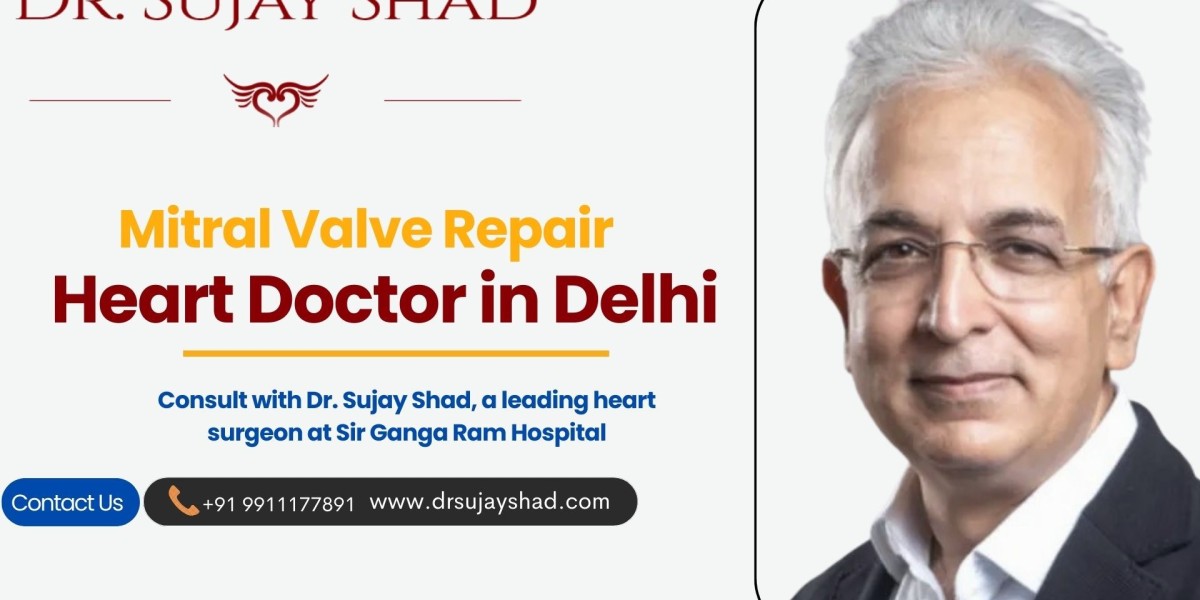The mitral valve disorders are one of the most common types of heart valve diseases, and millions are affected all over the world. The mitral valve, situated between the left atrium and left ventricle, facilitates one-way blood flow through the heart. As with any malfunction, such as in the cases of mitral valve prolapse (MVP), mitral regurgitation (MR), or mitral valve stenosis (MVS), many circulatory irregularities occur, which may cause a patient to feel fatigued and breathless or even induce heart failure.
This guide addresses frequently asked questions about surgery for Mitral Valve Repair in India, providing readers with an evidence-based, technical perspective to help them make an informed decision about the surgery.
Frequently Asked Questions
1. What does mitral valve repair surgery involve, and when is it necessary?
The mitral valve repair surgery is an operation in which a mitral valve, having impaired function, is restored without replacement. It is most often indicated when:
Blood leaks backward into the left atrium (mitral regurgitation).
The mitral valve has become narrowed or stiff (mitral stenosis).
Mitral valve prolapse prevents the valve leaflets from closing properly.
Surgery is recommended when symptoms interfere with daily life or heart imaging reveals enlargement of heart chambers, pulmonary hypertension, or reduced ejection fraction, even when an individual is asymptomatic.
2. When is Microtral Value Repair or replacement recommended?
The surgeon will recommend mitral valve repair or mitral valve replacement depending on the anatomy of the valve, the age of the patient, and any associated illnesses:
Valve repair is preferred whenever possible, especially for degenerative valve disease, as it preserves native tissue and offers better long-term results.
Valve replacement is done when the valve is badly damaged or stenotic. Surgeons may use:
Tissue valves that last for 15–20 years and do not require blood thinners.
Mechanical valves have an installed lifetime but require long-term anticoagulation therapy to prevent complications.
Surgical data indicate that repairs generally have fewer complications and provide better long-term survival when compared with replacements.
3. What is minimally invasive mitral valve surgery?
Minimally invasive mitral valve surgery involves making smaller cuts, usually between the ribs for access, as opposed to the more traditional approach of opening the midline of the chest. There are also catheter-based techniques in treating mitral valve disease. This is done in patients where open-heart surgery may be particularly risky; catheter methods may be considered.
Advantages are:
Shorter hospital stay (about 3 to 5 days)
Less blood loss
Lower incidence of infection
A quick rehabilitation period of 3 to 4 weeks
4. What risks are associated with mitral valve surgery?
With any other surgery, mitral valve procedures also carry potential risk. Among rare but serious complications can be:
Stroke
Bleeding or transfusion needs
Kidney or lung dysfunction
Infection in the treated area.
Need for pacemaker implantation.
Age is no longer a significant limiting factor; study results show excellent tolerance and significant benefits from surgery for those over 65 years. The cardiac team for Heart Valve Surgery in Delhi will evaluate your personalized risk via imaging and lab tests.
5. What is the recovery like following mitral valve surgery?
The surgical approach defines the final recovery:
With minimally invasive surgery, patients can typically return to their daily activities within 3 to 4 weeks.
Open-chest surgery may take 8 to 12 weeks for complete recovery.
A mild amount of discomfort and fatigue is usually felt. Cardiac rehabilitation and follow-up appointments for evaluating heart function and titrating medications are fundamental.
6. How successful is mitral valve surgery?
The average success rate of mitral valve repair in expert centers is over 95% for degenerative disease.
Mortality remains low (about 1-2%) given experienced hands.
Most patients experience an improvement in symptomatology and long-term cardiac function.
7. How is mitral valve disease diagnosed and monitored?
Diagnosis mostly includes:
Echocardiogram (either transthoracic (TTE) or transesophageal (TEE) for valve anatomy and function
ECG for rhythm analysis
Cardiac MRI or CT for complex anatomy
Stress testing for functional assessment
Regular monitoring is essential not just for symptom development but also to forestall irreversible heart damage.
Mitral valve repair can save a life, and in many cases, it significantly improves quality of life. With improvements in minimally invasive approaches, catheter-based techniques, and surgical volume craftsmanship, outcomes have improved substantially.
If mitral valve disease affects you or a loved one, an early consultation with a Heart Surgery Specialist in Delhi, such as Dr. Sujay Shad, can be beneficial. Explore advanced mitral valve treatment options with him, a top-rated heart surgeon.






